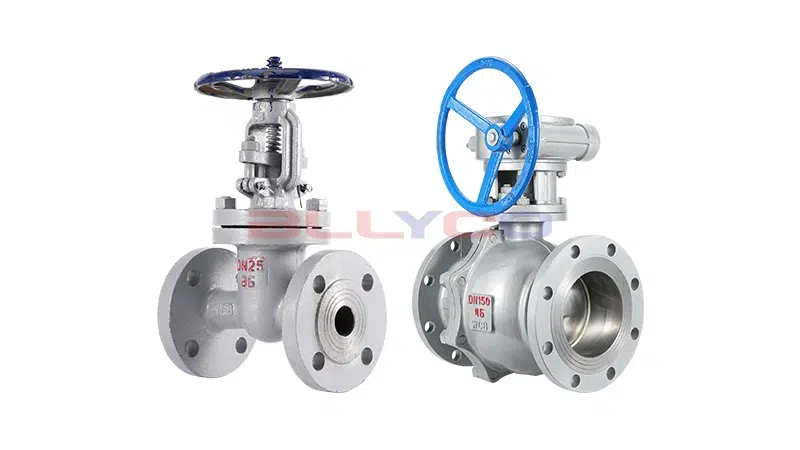Flange gate valve and flange ball valve differences
Date: 2025-07-11 Categories: Valve knowledge Views: 3847
Excerpt:
This article analyzes the core difference between flange gate valve and flange ball valve: structurally, the gate valve adopts the design of up and down movement of the gate plate (composed of the valve body, bonnet, etc.), while the ball valve is operated by rotating the ball by 90 degrees (including the valve body, ball, etc.); on the working principle, the gate valve relies on the sealing of the valve seat by the gate plate fitting, while the ball valve achieves the circulation through the rotation of the ball; on the usage scenario, the gate valve is suitable for the completely open and close and leakage prevention of strict occasions (e.g., water In terms of usage scenarios, gate valves are suitable for fully opening and closing and for strict leakage prevention (e.g. water treatment facilities), while ball valves are suitable for quick operation (e.g. fire protection systems). It is important to choose the right valve according to the actual needs and fluid characteristics.
In the field of fluid control systems, valves play a crucial role. In particularFlange Gate Valvestogether withFlange Ball ValvesIn the past few years, the industry has become the focus of attention due to its unique performance and wide range of applications. Although both are used to regulate the flow of fluids, but in terms of structural design, operation mechanism and applicable occasions, there are still many obvious differences between them. This article will provide you with a detailed analysis of the difference between flange gate valve and flange ball valve.

Structural differences:
- Flange gate valve: simple structure, mainly by the valve body, valve cover, valve stem and gate plate and other key components. The opening and closing mechanism is accomplished by the up and down movement of the gate plate driven by the valve stem.
- Flange ball valve: the valve is assembled by the valve body, ball, stem and sealing ring and other key components. Its opening and closing operation is accomplished by rotating the stem to drive the ball to rotate 90 degrees.
Difference in working principle:
- Flange Gate Valves: When in the closed state, the gate plate and the valve seat closely fit, thus realizing tight closure. In the open state, the gate plate moves completely out of the valve seat, ensuring that fluids can pass through smoothly and without obstruction.
- Flange ball valves: When in the closed state, the ball and the valve seat are in close contact to ensure a good sealing effect. In the open state, the ball is rotated ninety degrees, which makes the fluid channel to flow smoothly.
Usage Scenario Differences:
- Flanged gate valves: These valves are mainly used in places where complete opening or closing is required, such as large water treatment facilities and pumping stations. With its excellent sealing performance, flanged gate valves are also often selected for those very strict requirements for leakage prevention.
- Flange Ball Valves: With their suitability for rapid opening and closing, these valves are an ideal choice for fire protection systems, piping systems, and similar applications. Thanks to their simple structure and ease of operation, flange ball valves are also widely used across numerous industrial sectors.
The differences between flanged gate valves and flanged ball valves have been elaborated in this article. These two types of valves in the structure, operation mechanism and applicable occasions show their unique advantages. In the specific application process, according to the actual needs and fluid characteristics to select the most appropriate type of valve.

















